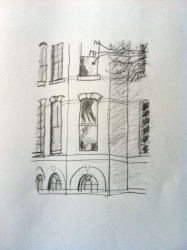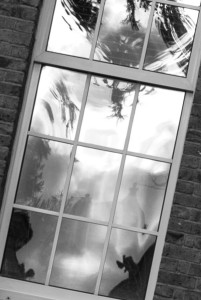- Window vector
- Window PS edges
- Window drawing
Photography students’ critical analysis of their own images traditionally occurs in written self-evaluations and ‘critiques’ where their photographs are viewed and discussed. Analysis is thus often understood to be a physically remote conceptual process that takes place in the realm of language, beyond the doing of photography.
Autographic Photographic, University of Brighton
Following my tutor’s feedback from assignment one I have been researching different approaches to evaluating and critiquing my own work, and the work of others. I have found a range of useful resources from using Bloom’s Taxonomy (familiar to me through my professional work) to semiotics. These all seemed helpful in different ways for creating a written analysis but while they were useful in developing an intellectual and conceptual response they felt lacking in some inexplicable way.
I then found Autographic Photographic and for me the elements I felt were missing emerged. This gave me a more embodied approach that involved working directly on and in the image, it also slowed down the process encouraging me to look and work deeper than I might have before. I used a number of techniques: Linear/Vector drawing (based on Whiteread laboured reflection), reproduction through physical copying/drawing, and different Photoshop filters (edges & mezzotint). Unfortunately, I didn’t have access to some of the printmaking methods suggested but felt the approaches I used gave me a similar sense of physically being in dialogue with an image.
I chose to work on the window image because I think it was one of the more problematic shots of the hospital set for assignment one, yet it also had something that kept drawing me back to it. It felt like it had more to offer that I hadn’t quite captured – Cotton’s notion of being an ‘itchy/scratchy’ image.
I had included it in the initial set because for me the windows signified something about ‘windows on the soul’, a metaphorical link to mental health and how it might be represented. I was struck by their reflective nature that meant you couldn’t actually see through the windows but could only imagine what might lie on the other side.
The mark making in particular highlighted the compositional deficiencies, it showed how central the window and its shadows were and an overall grid like, structure, which was less than interesting. Completing the linear/vector drawing was actually quite depressing as I really started to see the deficiencies and blandness of the image. I think it also reinforced my own sense of not being a natural street photographer. While I did take a considerable number of images for this assignment I know I took many of them quickly, such was my discomfort in being in other peoples’ spaces. It felt intrusive and I felt like an intruder.
Where I thought the shadows in the window were enough to create interest I could see that it was not enough to hold the image together compositionally. In looking at it more deeply in many ways it was obvious this was the case but in the heat of preparing for the assignment I hadn’t recognised it. This has shown me something about the need to slow down and live with the images over time, to work into them and explore their form and content further. In many ways the core of the image emerged as the reflections of the chapel in the window and all that signified in terms of the history and narrative of Brookwood Hospital. (Image: Window shadows)
References:
University of Brighton (2012), ‘Autographic Photographic: developing critical analysis through slow doing and embodied thinking’. Issue 16 [accessed: 4th May 2015] http://arts.brighton.ac.uk/projects/networks/issue-16-january-2012/autographic-photographic-developing-critical-analysis-through-slow-doing-and-embodied-thinking
Cotton, C The Itchy Scratchy Exhibition http://www.permanentgallery.com/wp/?page_id=171
Whiteread, R (2010) ‘The process of drawing is like writing a diary: it’s a nice way of thinking about time passing’ [accessed: 4th May 2015]
http://www.tate.org.uk/context-comment/articles/process-drawing-writing-diary-its-nice-way-thinking-about-time-passing

























